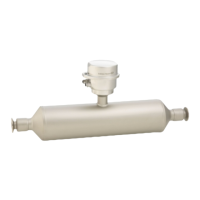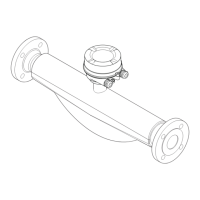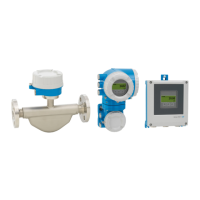Proline Promass I 100
Endress+Hauser 49
For an overview of the measuring range full scale values, see the "Measuring range" section
(→ 8)
• The minimum recommended full scale value is approx. 1/20 of the maximum full scale value
• In most applications, 20 to 50 % of the maximum full scale value can be considered ideal
• Select a lower full scale value for abrasive substances (such as liquids with entrained solids): flow
velocity <1 m/s (<3 ft/s).
• For gas measurement the following rules apply:
– The flow velocity in the measuring tubes should not exceed half the sonic velocity (0.5 Mach).
– The maximum mass flow depends on the density of the gas: formula (→ 8)
Pressure loss
To calculate the pressure loss, use the Applicator sizing tool (→ 82)
System pressure
It is important that cavitation does not occur, or that gases entrained in the liquids do not outgas.
This is prevented by means of a sufficiently high system pressure.
For this reason, the following mounting locations are recommended:
• At the lowest point in a vertical pipe
• Downstream from pumps (no danger of vacuum)
A0015594
Thermal insulation
In the case of some fluids, it is important that the heat radiated from the sensor to the transmitter is
kept to a minimum. A wide range of materials can be used for the required insulation.
A0019919
a Minimum distance to insulation
t Insulation thickness
The minimum distance between the transmitter housing and the insulation is 10 mm (0.39 in) so
that the transmitter head remains completely exposed.
Insulation thickness for version without neck extension

